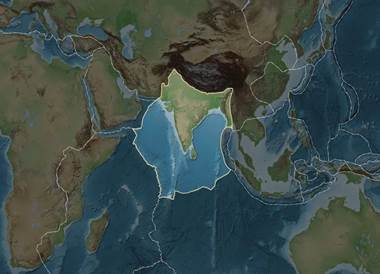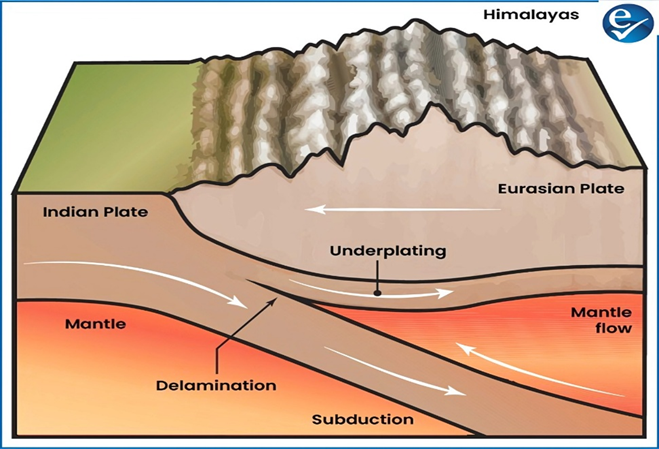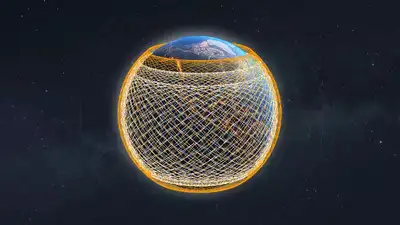- Courses
- GS Full Course 1 Year
- GS Full Course 2 Year
- GS Full Course 3 Year
- GS Full Course Till Selection
- CSAT
- 5 LAYERED ARJUNA Mentorship
- Public Administration Optional
- Online Program
- GS Recorded Course
- NCERT (Recorded 500+ Hours)
- Polity Recorded Course
- Geography Recorded Course
- Economy Recorded Course
- AMAC Recorded Course
- Modern India, Post Independence & World History
- Environment Recoded Course
- Governance Recoded Course
- Science & Tech. Recoded Course
- International Relations and Internal Security Recorded Course
- Disaster Management Module Course
- Ethics Recoded Course
- Essay Recoded Course
- Current Affairs Recoded Course
- ABOUT US
- OUR TOPPERS
- TEST SERIES
- FREE STUDY MATERIAL
- VIDEOS
- CONTACT US
New research suggest that Indian Continental Plate is splitting apart
New research suggest that Indian Continental Plate is splitting apart
16-04-2025

Recent tectonic studies propose a third mechanism affecting the Indian Plate's interaction with the Eurasian Plate.

Indian Continental Plate is splitting apart

Indian Continental Plate is splitting apart
Geological Context
- The Indian Continental Plate is one of Earth's major tectonic plates.
- It is bordered by four significant plates: the Eurasian, Arabian, African, and Australian Plates.
- Around 60 million years ago, the Indian Plate began its northward drift.
- This ongoing convergence with the Eurasian Plate gave rise to the Himalayas and the Tibetan Plateau.
Traditional Theories Explaining the Uplift
- Underplating Theory: The denser Indian lower crust slides beneath the lighter Eurasian crust during convergence.
- Subduction Theory: Denser plates typically sink below lighter ones during collisions, a process called subduction.
- However, continental plates are thick and buoyant, unlike oceanic plates, and resist subduction into the mantle.
Emerging Theory: Delamination and Plate Splitting
- Recent findings suggest a new mechanism — delamination — may be occurring.
- Delamination involves the dense lower layer of the Indian Plate peeling off and sinking into the mantle.
- This process could be causing the Indian Plate to split internally as it continues to collide with the Eurasian Plate.
|
Also Read |
|
| NCERT Books For UPSC | |
| UPSC Monthly Magazine | Best IAS Coaching in Delhi |




